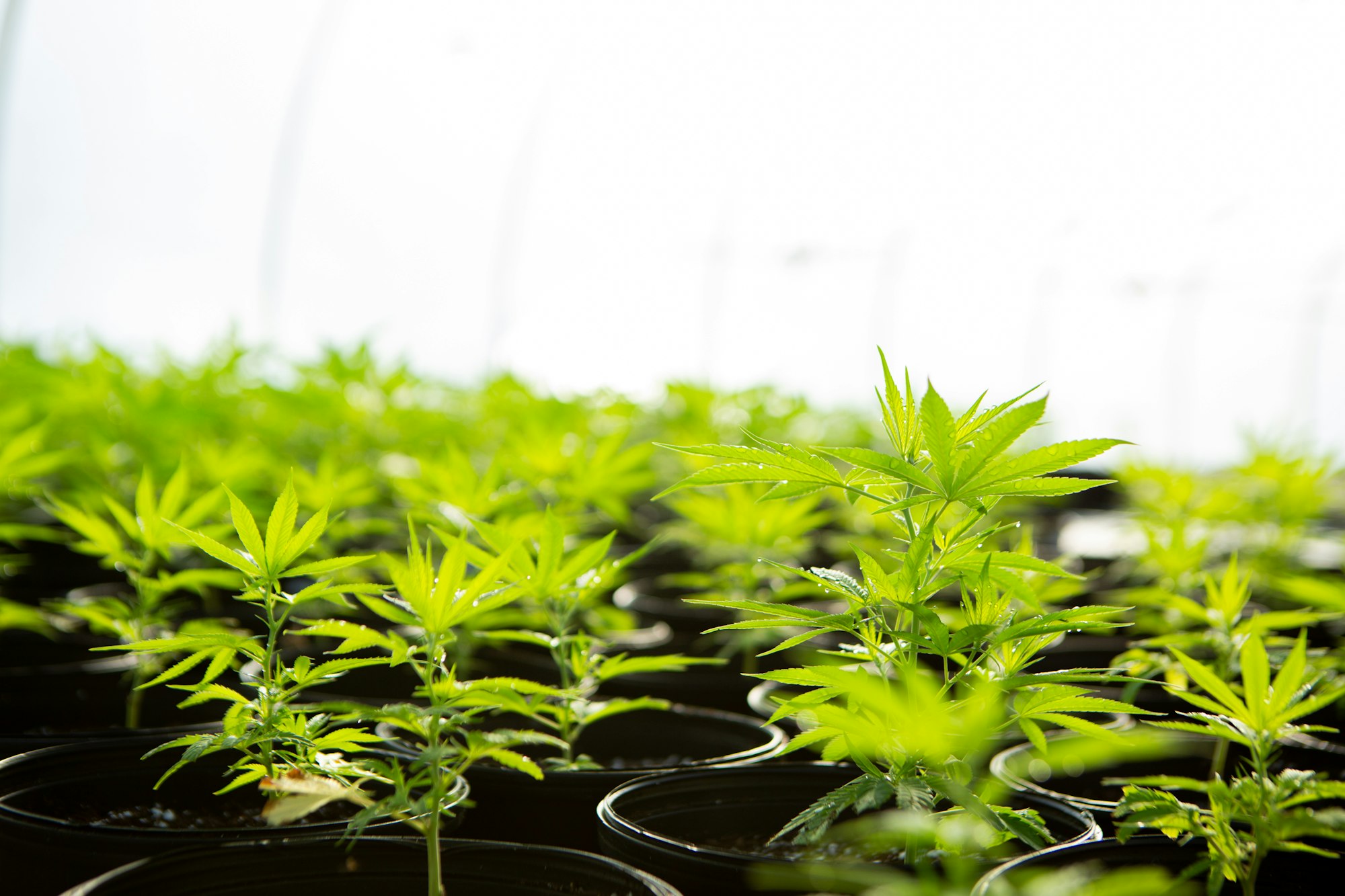How is hemp cultivated?
The cultivation of hemp is not that complicated. But depending on where you are located you might need to keep some legal aspects in mind before growing your own industrial hemp.

The cultivation of hemp is not that complicated. But depending on where you are located you might need to keep some legal aspects in mind before growing your own industrial hemp.
Location
Hemp is generally not very demanding in terms of location. However, for good yields, soils that are too dense (e.g. heavy clay soils) or too loose (e.g. sandy soils) should be avoided. Lack of oxygen in the soil has a negative effect on hemp and leads to stunted growth. The pH value of the soil should be neutral to slightly alkaline. In order to cover the hemp’s nutrient requirements, legumes or clover grass, for example, can be used as a preceding crop. Due to its deep roots, which loosen the soil, and its weed-suppressing properties, hemp itself is also ideally suited as a preceding crop. The hemp plant also survives light frost.
Sowing
Only varieties from the EU useful hemp catalogue may be cultivated. The seeds must be certified and appropriate certificates must be presented during inspections. Before starting to sow hemp, one should decide on a focus. This can either be on hemp seeds and the oil they contain, or on fibre hemp. Due to high transport costs, the latter is often only worthwhile if it is close to the processor. This focus further limits the choice of variety. The specific variety and location then determine the time and quantity of sowing.
Depending on the variety, sowing then takes place between mid-March and early May, when the soil is dry and warm (above 8°C). Sowing is done with a drill at a depth of 2-6cm, depending on the firmness of the soil. As rapid longitudinal growth is desired when growing fibre hemp, it is planted more densely and requires about 55 to 70 kg of seed per hectare. For seed production, wider plants with stronger flowering are preferred, which require more distance from each other. Here, approx. 12-25 kg of seed per hectare are required.
Care
Due to the rapid germination of the seeds, the soil is quickly shaded, especially with densely planted fibre hemp. This suppresses weed growth and herbicides are not necessary. With less densely planted seed hemp, mechanical weed control may be necessary. Due to the terpenes contained in hemp, it has a natural defence against pests, which is why no pesticides are needed. There is already initial research that uses hemp extracts containing terpenes as a natural pesticide. Due to its deep roots, some of which reach down to a depth of three metres, hemp also absorbs nutrients from deeper soil layers. Per hectare, hemp extracts about 80-120 kilograms of nitrogen from the soil. Since excessive nitrogen fertilisation does not lead to increased yields but to more susceptible plants, fertiliser should only be applied in doses after prior soil sampling. Organic fertilisation with liquid manure and dung fits well with the temporal needs of the plant due to the slow release of nitrogen.
Harvest
The hemp harvest takes place with the help of special machines. For seed harvesting, the seeds are harvested in September with special combine harvesters. These only harvest the upper part of the plant, because the more fibres are harvested, the more likely they are to wrap around rotating parts and thus clog the machine. Under optimal conditions, up to two tonnes of hemp seeds can be harvested per hectare. Afterwards, the remaining fibrous stalks can also be harvested. Pure fibre hemp is already harvested at the end of July when it flowers. The hemp is cut close to the ground and left on the field to dry. This dries the hemp over two to four weeks and the binding agents (pectin) in the plant are decomposed. The hemp now takes on a brown colour. Only after roasting is it possible to separate the hemp fibres from the shives. The dried hemp straw is then pressed into bales and must be stored in a dry place.
Cultivation of Hemp in Germany
After the prohibition of hemp cultivation in 1982, the cultivation of commercial hemp has been allowed again in Germany since 1996. However, only under strict conditions. Anyone who wants to cultivate commercial hemp in Germany must be a farmer according to the Law on the Old-Age Security of Farmers (ALG). Cultivation is generally prohibited for private individuals. The cultivation itself is controlled by the Federal Agency for Agriculture and Food (BLE). If a farmer cultivates hemp, even as an intercrop, this must be registered with the BLE. The exact details include the size and location of the cultivated area, the variety used and the expected date of flowering. The flowering of the hemp plant is under special scrutiny, as this is when the THC content in the plant is highest. The beginning of flowering must be communicated to the BLE so that they can take samples in the field to determine the THC content. Harvesting may not begin until these samples are in order and the farmer has received clearance from the BLE.
